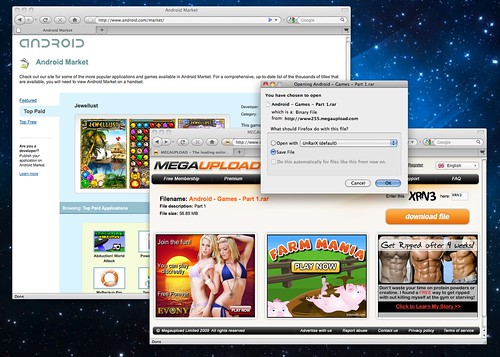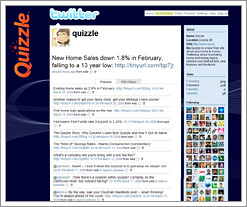A few weeks ago Ken Fisher wrote a popular blog post about how ad blocking software can have devastating effects to the websites that you frequently visit. Mr. Fischer describes how ad blocking software is responsible for showing false page view data to ad networks. As a result each ad is priced at a lower rate because the number of impressions are significantly smaller. The number of page views is an extremely important metric for websites that sell advertising based on a CPM price model. So it’s only understandable that Mr. Fischer and other online publishers will hold a grudge against ad blocking software.
While I can understand Mr. Fischer’s frustration I cannot sympathize. To be completely honest I use ad blocking software every day. In fact on at least one occasion add blocking software has been responsible for a pretty embarrassing moment. So you’re probably asking yourself why does someone who feels so strongly about marketing block advertisements? It’s simple really, I hate ads.
What? You hate ads? How can you write for Marketing Pilgrim and hate ads? In my opinion marketing is fundamentally organizing people around information. Interrupting people with abrupt irrelevant commands isn’t how you organize people around information. Instead speaking to them on a unique and authentic level is more effective and genuine.
Putting philosophy aside, in my opinion ads are the worst way to monetize content. Generally speaking an increase in on-page advertisements contributes to a degraded user experience. Which can lead to lower user retention levels and decreased page views. Online advertisements are also ripe with fraud and manipulation. Historically click through rates have been at around 2% for most online advertisements. All of these factors and more contribute to the extremely low return on investment.
Online ads add to a decreasing user experience by taking attention away from the site’s primary content and placing it on the ads. This is not the actions of rogue spammers, this is the fundamental method to making any substantial revenue from ads. An excellent example of this in action, is taking a look at Google’s own recommendations for ad placement in the Adsense program. Here we see Google advises users to place ads on every available white-space on the page. This is a huge contradiction for a company that was so widely praised for starting with such a clean user interface.
Most ad platforms have large potential for fraud and manipulation. This is is an issue that not many professionals in IM discuss publicly because, quite honestly, whether they are participating in the fraud or not they still stand to profit off of ad manipulation. To a great extent Google and some of the other larger ad networks have gone to great lengths to minimize the impact of this type of fraud. However, any potential for fraud creates an uneasy market place where advertisers and publishers are continually left wondering if they are being taken advantage of. Google doesn’t help matters by keeping the exact specifics of their pricing model a secret from both advertisers and publishers. What’s even more devastating about these fraud schemes is that they can manipulate entire ad markets not just the individual ads they are targeting.
We reported back in January that the average click through rate for Google Adwords is around 2%. This means that 2% of the site visitors are clicking through on the ads. Most businesses off the Internet wouldn’t be able to survive with a 2% conversion rate. The only way to make substantial revenue from ads on the Internet is to completely dominate the market and control the flow of information. *cough* Google *cough*.
Wow Joe what do you want me to do? Not make any money? Absolutely not! But I do think that more companies and content producers need to experiment with different business models that aren’t reliant on ad dollars. The mainstream media on the internet is already starting to experiment with pay walls and different premium membership options. While I generally agree with the old saying that information should be free, I do think there is substantial room to monetize parts of the web that are currently a free-for-all. For example there are many opportunities to monetize communities and forums that provide quality content and meaningful dialogue to its users. Another potential opportunity is product development. Content developers and publishers should work to create their own products aside from their content that they can offer to their regular subscribers for premium fee.
So next time you see a drop in your ad revenue don’t blame the users, blame the ads. They got you into this mess and they aren’t going to get you out!
Social Media Monitoring in Just 60-Seconds. Guaranteed!
The Academy Awards are not yet over, so I’m going to make my prediction: Inglourious Basterds will win Best Picture.
I know, I know — it’s been Hurt Locker’s awards season, and so far, Hurt Locker’s night. But that is precisely why I’m even more sure that Basterds will take the top spot.
Here’s the thing: The Hurt Locker was an amazing, important film. But did I enjoy it? Of course not. It was very tough to watch, and while gripping, not exactly what you’d call a happy place. Basterds, while violent and shocking and about the Holocaust never you mind, was a damn fun movie to watch. People love that movie. They love talking about it, pulling it apart; they love the characters (Christoph Waltz! What a delightfully evil and charming villain! Shoshana, as badass a heroine as Quentin Tarantino has ever created! The Bear Jew, fetish object for niches across the Internet! Look, it’s B.J. Novak and Mike Myers! And — Brad Pitt!). Oh and Diane Kruger’s not too rough on the eyes, either.
Yes, Inglourious Basterds has had the benefit of the Harvey Weinstein marketing machine, not to mention a pretty smart ongoing campaign of marketing (hello, Rabbis, glad you enjoyed the film!). But none of that would matter if the movie wasn’t good.
Look at previous awards shows — any time there was an ensemble cast award to be won, Basterds took it handily (People’s Choice, Screen Actors Guild). It’s been nominated for the key awards — screenplay, director, picture. So has Hurt Locker, obviously; and as Jason Reitman can tell you, numerous nominations does not an actual Oscar make. But — I think that Oscar voters like to reward the movies that they like. Hold that thought for a moment.
Consider the Oscar screener. Viewed in a home theater, most likely — so on a second watch of Avatar, which is dazzling in many ways but not really in its story, a voter would likely be less impressed than, say, in a giant IMAX theater. And, as mentioned above, Hurt Locker is a great film, an important film, but — yes — a challenging film. (The same way The Messenger is an important but challenging film. Up In The Air is not a challenging film.) Inglourious Basterds, on the other hand, hits that magical sweet spot: An important film (a Holocaust film, lest we forget what the Academy just loves), but still, a damn fun one — and one that is even more fascinating on the second watch, with new details revealing themselves like the little nuggets that Tarantino seems to bury just for the extra-obsessed fan.
And — bias declared — I’m Jewish. And what can I say, Jews seems to be extra-engaged by Inglourious Basterds, for obvious reasons. (See reference to bloodthirsty, revenge-crazed rabbis above; or, just a proud Jewish papa.) If I make a joke about Jews in Hollywood I will certainly not be the first; indeed, Steve Martin and Alec Baldwin made one about Basterds just tonight (about how easy it would be for Waltz’s “Jew Hunter” in the Kodak Theater tonight). (Never mind recasting Jews as virile, badass avengers.) I’m not saying that there is bias in voting, per se — I’m saying that some movies strike a real chord. That’s how hits are made. The effect they have on us, as audience even as we’re doubling as critic, is real. If it hits the brain it’s one thing, but if it hits the gut, well, that’s quite another.
Okay, now: Let’s go back to the thought I told you to hold. Cut to the bizarro new Best Picture rules. There are ten nominees — twice as many as usual — and along with the more wild-card, pot pourri nature of the competition, there’s also equally wildcard new voting rules: You vote for your favorites according to rank. So — you can vote for the film you think ought to win, or the film you want to win, or your favorite; or for all the films you’d like to win over the one film you hate. This encourages strategic voting (see Steve Pond’s Oscar picks at The Wrap) — but also frees people up to vote for their second-favorite film second, or their guilty-pleasure film second, or their anti-Avatar film second. You see where I’m going with this. This race has officially been Avatar vs. Hurt Locker, but if there was ever a dark horse that would come up the middle, it’s Basterds.
And now, as the Oscars are almost over, Hurt Locker has kicked ass like a Bear Jew taking aim at a Nazi skull, and there are two big awards still to go: Best Director and Best Picture. Kathryn Bigelow will win Best Director, and should, for a variety of reasons (getting a picture made and overcoming the obstacles thereto is a big part of that). But with votes cast for Hurt Locker across the board, for all the big, pointed awards — well, the way is clear for Best Picture for just a little leeway. Especially when everyone else will surely vote for the other one, be it Hurt Locker or Avatar. And after all, you’re supposed to rank your favorites accordingly, right? Of course right.
It’s just a theory. At this point, no one knows except some dude in glasses a pocket protector at Price Waterhouse-Coopers. But — with minutes to go in the ceremony — I’m making the call: Inglourious Basterds will win Best Picture.
And should.
bill bartmann


